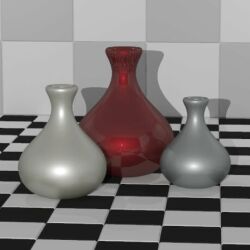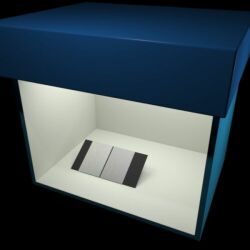 |
Computer Graphic Rendering of Material Surfaces |
 |
 |
Computer Graphic Rendering of Material Surfaces |
 |
Introduction
Walk into a darkened room and turn on the lights. The gleam of furniture, the color and texture of carpets and curtains are instantly visible. A simple everyday act-but the science behind it is a complex and increasingly important part of materials design and manufacturing. Light from a light source hits a surface and part of it is scattered and transmitted to your eyes. The visual perception of an object- what we call its appearance arises from the interaction of incident light with the object's surface geometry or texture. Optical properties of the material (such as index of refraction or polarization) also play a very important role. Will there come a day when given the microstructural and optical properties of a material a computer program can create the image of a chair made with that material? Making that day a reality will depend on the outcome of research done today.
For some years computer programs have produced images of scenes based on a simulation of scattering and reflection of light off one or more surfaces. In response to increasing demand for the use of rendering in design and manufacturing, the models used in these programs have undergone intense research in the computer graphics community. In particular, more physically realistic models are sought (i.e. models that more accurately depict the physics of light interaction). There has however been a lack of relevant optical measurements needed to complement the modelling. As part of the NIST competency project entitled "Measurement Science for Optical Reflectance and Scattering", Fern Hunt of MCSD 891 coordinated the development of a computer rendering system that utilizes high quality optical measurements that will be used to render physically realistic and potentially photorealistic images. We collaborated with Gary Meyer and Harold Westlund of Computer and Information Sciences Department at the University of Oregon. Michael Metzler of Isciences Inc. developed optical measurement protocols that could be used to generate appropriate data and models for the rendering program.
|
Privacy Statement/Security Notice | Disclaimer | FOIA NIST is an agency of the U.S. Commerce Department's Technology Administration. |